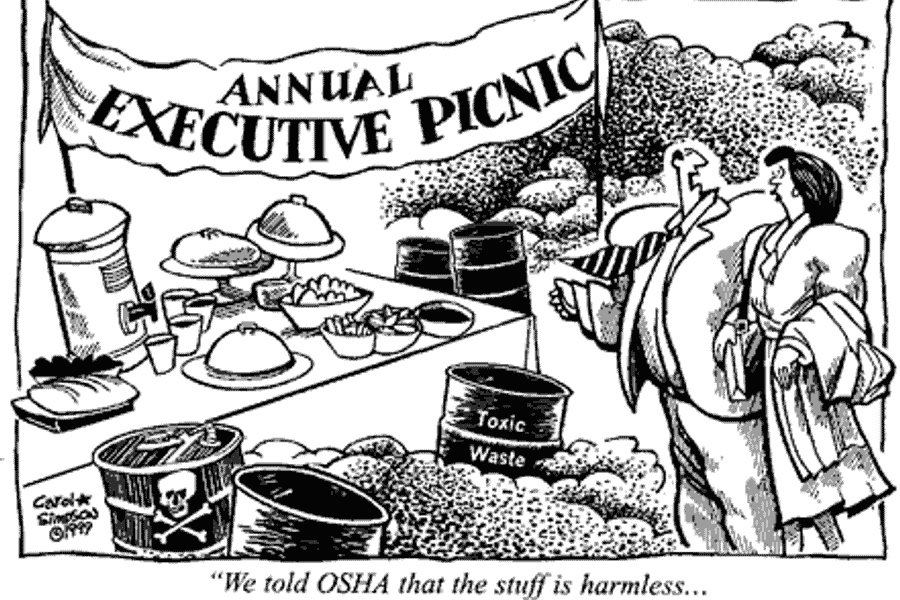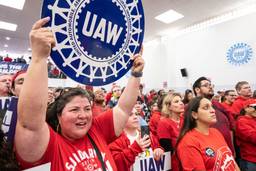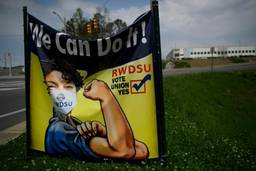
This week, while lawmakers on Capitol Hill waved their menacing budget axe over social programs, Obama quietly sharpened his magic shears for another set of cuts that seems more benign. His latest plan to boost the economy isn’t about job creation or taxes; it’s about something we all hate: red tape. Who wouldn’t be against that?
Obama’s January 18 memo, “Regulatory Flexibility, Small Business, and Job Creation,” lays out an agenda for reducing the “burdens” that get in the way of economic growth:
My Administration is firmly committed to eliminating excessive and unjustified burdens on small businesses, and to ensuring that regulations are designed with careful consideration of their effects, including their cumulative effects, on small businesses.
The memo directed various executive departments and agencies to assess the economic impact on “small entities” during the rulemaking process, aiming “to reduce regulatory burdens on small businesses, through increased flexibility.”
Translation: this administration will make it as easy as possible for firms to make money, which means we may have to relax rules designed to keep corporations from hurting workers, deceiving consumers and destroying the environment.
To accompany the memo and an accompanying executive order, Obama wrote in a Wall Street Journal op-ed:
Regulations do have costs; often, as a country, we have to make tough decisions about whether those costs are necessary. But what is clear is that we can strike the right balance.
Government watchdogs aren’t sure the so-called “balance” will line up on the side of the public interest.
According to University of Maryland law professor Rena Steinzor, with the Center for Progressive Reform (CPR), Obama was repeating standard anti-government talking points:
If you listen carefully, you might hear the voices of disbelief and anguish from the families of the 11 workers killed in the Deepwater Horizon disaster, the 29 workers whose lives were extinguished at the Big Branch mine, and the nine who died after eating peanut butter crackers and similar products infected by salmonella. … The families, friends, and co-workers of these victims of under-regulation and under-enforcement might conclude that the United States is reverting to a place where the government most definitely does not protect people who can’t protect themselves.
Indeed, it’s hard to see how much less regulation the public can afford in the wake of last year’s man-made disasters: the BP oil spill and the Massey mine tragedy. After all, recent failures of the regulatory system have prompted Congress in recent months to beef up oversight of the financial sector and strengthening food safety rules.
Jeff Ruch of Public Employees for Environmental Responsibility, which advocates for whistleblowers in government agencies, told In These Times, “the timing of this new order suggests short-term political memory loss or an abiding confidence in the short attention span of the American people.”
The watchdog group OMB Watch fears Obama’s call for “flexibility,” though vague, could pave the way for rewriting critical safeguards to please corporations:
While the memo provides little in the way of new requirements, it does say that agencies are “to reduce regulatory burdens on small businesses…” There is no emphasis on balancing these burdens with the benefits generated by public protections, and the approach is inconsistent with the balancing of costs and benefits, which the administration has been advocating for the last two years.
Progressives are wary that Obama may follow the starve-the-beast approach of the Bush administration, which racked up a long “anti-regulatory hit list” of supposedly onerous rules. In one effort to alleviate the “burden” on pollluters, according to the CPR, Bush decided to “[exempt] facilities emitting less than one ton a year of lead — a group that comprises a large number of lead polluters — from any monitoring requirements.”
What would a shift toward deregulation mean for ordinary Americans? Advocates say it could show up in lax safety standards for cranes on construction sites, or inadequate monitoring of toy manufacturers for toxic materials. But perhaps the biggest danger of all is that it would foster a political climate that prioritizes the bottom line over the well-being of communities and natural resources.
To its credit, the Obama administration has won measured praise from good-government groups. The CPR noted in Obama’s first-year report card that the major agencies – Consumer Product Safety Commission, Environmental Protection Agency, Food and Drug Administration, National Highway Traffic Safety Administration and Occupational Safety and Health Administration — on the whole “began to address important health, safety, and environmental issues that have been ignored for too long,” including efforts to deal with greenhouse gas emissions under the EPA.
OMB Watch recently lauded the administration for stepping up the enforcement activities of agencies like OSHA, though it worried that Obama had not fully restored the damage Bush had done to agencies through an arcane Clinton-Era executive order on “regulatory review.”
Even in the latest batch of White House directives, New York University legal scholars Richard L. Revesz and Michael A. Livermore argue Obama’s reforms could help strengthen vital regulations and make the bureaucracy more efficient – the kind of regulatory reform that watchdogs support.
Still, Joel Shufro of New York Committee on Occupational Safety and Health said that in a workplace environment, “What’s unnecessary to business is very different than what is unnecessary to workers”:
Is it necessary to provide fall protection to workers?… If you’re a worker… who falls off the roof, that fall protection is necessary. If you’re paying for that fall protection, it might not be as necessary.
Though the administration has not yet acted to dismantle specific regulations, Shufro sees a deeper right-wing agenda at work:
The decline in union density has put steel in the back of every employer. And they see this as a historic opportunity to go after those vital parts of safety net that provide protection to workers, so that they can push their agenda of profit over people’s lives further.
The whole concept of “cost-benefit analysis” has a grim history in conservative politics, often associated with a corporate mentality that monetizes every function of government while marginalizing fundamental rights to health and safety.
Since the regulatory process is just slightly less exciting than an enema to most Americans, the sausage-making of federal regulation — the bureaucratic machinations that uphold standards on factory safety, polluting chemicals, protective gear for workers — is easily overlooked by the media and voters. But it’s the very banality of these safeguards that leads the public to take them for granted. Unfortunately, a visceral disdain for red tape could make it easy for businesses to quietly undermine vital pillars of government — through the backdoor of the Oval Office.

I hope you found this article important. Before you leave, I want to ask you to consider supporting our work with a donation. In These Times needs readers like you to help sustain our mission. We don’t depend on—or want—corporate advertising or deep-pocketed billionaires to fund our journalism. We’re supported by you, the reader, so we can focus on covering the issues that matter most to the progressive movement without fear or compromise.
Our work isn’t hidden behind a paywall because of people like you who support our journalism. We want to keep it that way. If you value the work we do and the movements we cover, please consider donating to In These Times.
Michelle Chen is a contributing writer at In These Times and The Nation, a contributing editor at Dissent and a co-producer of the “Belabored” podcast. She studies history at the CUNY Graduate Center. She tweets at @meeshellchen.







